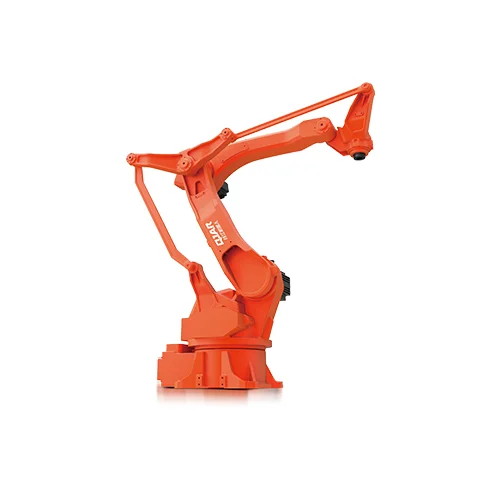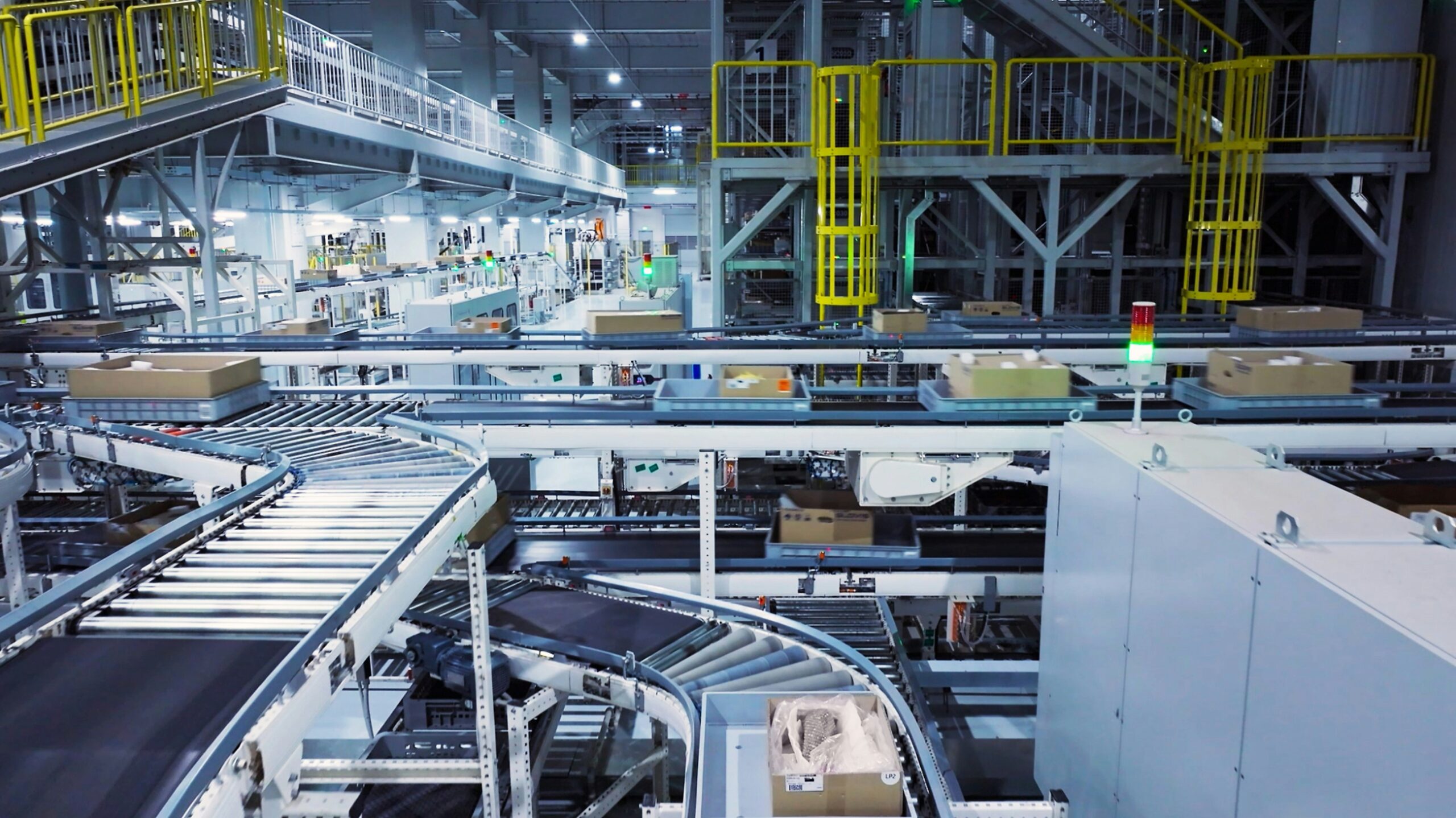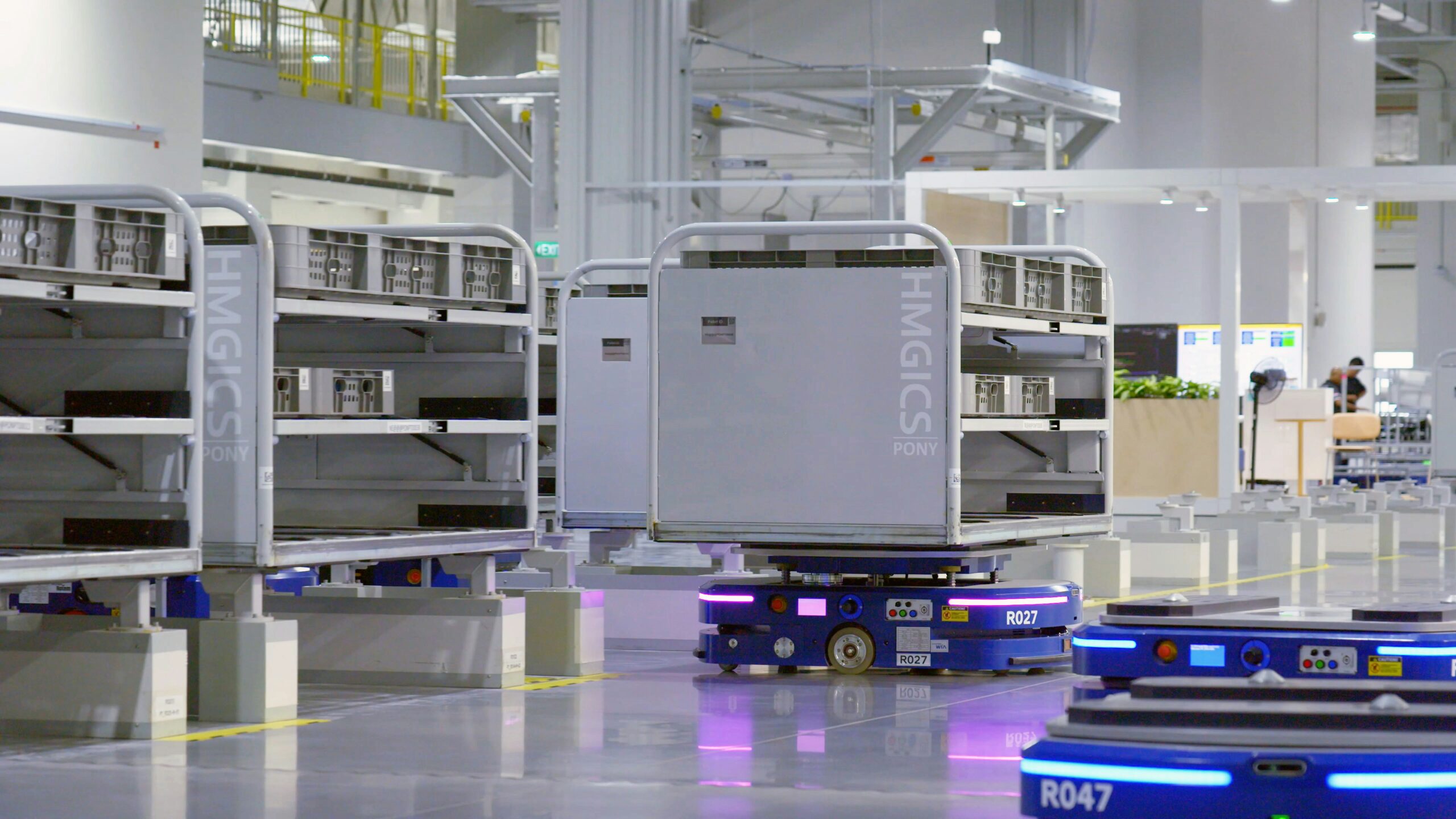Introduction
In a time when the effectiveness of warehouse and logistics operations is contingent on precision and efficiency, the incorporation of cutting-edge technologies has assumed critical importance. Palletizing robots have emerged as pivotal innovations among these developments, substantially boosting output and lowering reliance on manual labor. Not only are these robotic systems enhancing capabilities, but they are also transforming the flow of products from the warehouse to the delivery truck. The proficient performance of the QJRB15-1 robotic arm in palletizing, picking, packaging, and handling operations provides a view into the future of robotics in logistics. This article explores the profound implications of palletizing robots on the logistics sector, emphasizing the operational efficiencies they impart.
The Rise of Palletizing Robots in Logistics
What Are Palletizing Robots?
Simplifying the tedious process of loading merchandise onto palettes prior to transport and storage, automated Palletizing robots are sophisticated robotic systems designed to handle this responsibility. The increasing importance of automation in supply chain operations to satisfy the growing requirements for speed, accuracy, and efficiency is demonstrated by their advancement within the logistics sector.
Evolution and Importance
Palletizing robots have progressed from basic machines to complex systems capable of high-precision, high-speed tasks since their inception. The QJRB15-1 robotic arm, featuring a 1510mm armspan and a 15kg payload, embodies this progression by demonstrating its capability to execute an extensive array of logistical tasks with an exceptional repeat positioning accuracy of ±0.05mm. The aforementioned flexibility renders it an exceptionally valuable resource within the intelligent manufacturing sector, which includes furniture, food and beverage, and 3C.

Benefits of Implementing Palletizing Robots
Increased Throughput and Precision
The implementation of palletizing robots within logistics operations presents unparalleled advantages, such as a substantial augmentation in output and improved accuracy in the manipulation of merchandise. For example, the QJRB15-1 facilitates palletizing, selecting, packaging, and handling with high speed and accuracy, ensuring that products are processed expeditiously and precisely, and are prepared for storage or shipment without delay.
Enhanced Workplace Safety
An additional noteworthy benefit of incorporating palletizing robots into logistics processes is the improvement of safety measures in the workplace. The risk of injuries commonly associated with manual labor is mitigated when the physically taxing and repetitious duties of stacking and palletizing are automated by these robots, thereby establishing a more secure working environment for personnel.

Integration Challenges and Solutions
Overcoming Integration Hurdles
Incorporating palletizing robots into pre-existing logistics systems may entail a number of obstacles, such as financial commitment, initial investment considerations, and compatibility issues with other systems. Nevertheless, these obstacles are surmountable through the implementation of strategic planning. As an illustration, the QJRB15-1 robotic arm’s compact design facilitates adaptable implementation in diverse operational configurations, thereby effectively addressing spatial constraints.
Phased Implementation and Staff Training
By adopting a phased strategy, the introduction of palletizing robots can have a reduced adverse effect on ongoing operations, enabling a gradual process of adaptation and enhancement. Investing in staff training further guarantees that personnel are adequately prepared to collaborate with these autonomous systems, thereby optimizing the prospective advantages of automation.

Case Study – Efficiency in Action
Streamlining Operations with the QJRB180-1 Universal Robot
The effectiveness of palletizing robots is empirically illustrated through a case study that utilizes the QJRB180-1 universal robot. With an armspan of 3153.7mm and a payload capacity of 180kg, this robot has significantly contributed to the automation of a cookware manufacturer’s production line. The utilization of robotics in logistics to perform selecting, packaging, palletizing, and handling with exceptional speed and accuracy serves as a prime illustration of the substantial improvements that can be made to operational efficiency. The uninterrupted functioning of the robot, free from signs of exhaustion, demonstrates an extent of effectiveness that exceeds that of human labor, thereby emphasizing the revolutionary capacity of palletizing robots within the logistics sector.
Future Trends in Robotics and Logistics
Advancements in AI and Collaborative Robotics
The integration of artificial intelligence (AI), machine learning, and collaborative robotics holds the potential to significantly advance the frontiers of robotics in logistics, thereby fostering an optimistic outlook for the discipline’s future. The aforementioned emergent technologies have the capacity to augment the independence, flexibility, and smooth incorporation of palletizing robots into workflows that prioritize humans. As a result, they can optimize the effectiveness of logistics procedures that extend from the storage area to the point of delivery.

Sustainable and Safe Logistics Operations
In a sector where environmental consciousness and safety are increasingly paramount, palletizing robots offer solutions that are consistent with these goals. It is likely that future progress will revolve around the creation of energy-efficient automation that can work in tandem with human laborers to improve operational efficiency, environmental stewardship, and workplace safety.
Making the Move to Robotic Palletizing
Evaluating Your Needs and Selecting the Right Robot
When logistics and warehouse managers contemplate the transition to robotic palletization, it is vital to assess the particular requirements of their departments. The complexity of the palletizing patterns, the dimensions and weight of the products, and the integration with pre-existing systems are all elements that warrant consideration. Due to their adaptability and effectiveness, robots such as the QJRB15-1 are well-suited for an extensive array of tasks, providing a solid foundation for organizations seeking to mechanize their palletizing operations.
Embracing the Benefits of Automation
By implementing palletizing robots, an organization not only stays abreast of technological advancements but also capitalises on the chance to optimise operations, minimise expenditures, and enhance safety protocols. With the proper planning and implementation strategy, organizations can leverage the capabilities of robotics in logistics to maintain competitiveness in a sector enduring rapid change.
Conclusion
The process of moving items from the warehouse to the delivery location is arduous and requires promptness, precision, and effectiveness. Palletizing robots symbolize a critical resolution to these obstacles, presenting the potential for optimized procedures, heightened security, and increased output. The future of logistics is in the hands of robotic automation, as evidenced by the effectiveness of the QJRB180-1 case study and the capabilities of the QJRB15-1 robotic arm. Organizations that are prepared to adopt this trajectory should contemplate their requirements thoroughly, pledge to incorporate sophisticated robotics into their processes, and keep in mind the dynamic environment of robotics in logistics.
